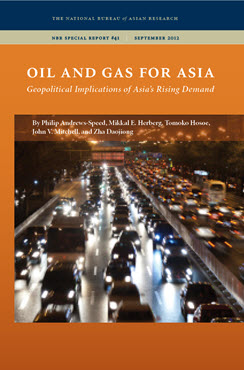Asia's Post-Fukushima Market for Liquefied Natural Gas
A Special Focus on Japan
This essay provides an outlook for liquefied natural gas (LNG) markets in Asia and argues that the Great East Japan Earthquake and subsequent tsunami on March 11, 2011, had a widespread effect not only on Japan’s energy situation but on long-term energy policy globally.
EXECUTIVE SUMMARY
This essay provides an outlook for liquefied natural gas (LNG) markets in Asia and argues that the Great East Japan Earthquake and subsequent tsunami on March 11, 2011, had a widespread effect not only on Japan’s energy situation but on long-term energy policy globally.
MAIN ARGUMENT
As a result of the disruption in nuclear-power generation, Japan’s demand for LNG, as well as for low-sulfur fuel oil and crude oil, for power generation increased significantly in 2011. LNG imports increased by 12% to 78.5 million tons, accounting for 32% of the global LNG trade. Imports will be even higher in 2012 as the country continues to face an unprecedented nuclear crisis. Japan, once considered a mature and saturated market, has become a renewed growing market and will remain the world’s biggest importer of LNG for the foreseeable future.
POLICY IMPLICATIONS
- Japan’s post-Fukushima energy policy will be the key driver shaping Japan’s LNG demand over the next decade or more.
- Japan’s demand for fuel will generate concerns over energy security among other Asian LNG buyers for at least the next five to six years, until more supplies become available from greenfield projects, including those in Australia and North America.
- Toward 2020, North American gas supplies, namely LNG from the United States, will play a key role in meeting Asia’s increasing LNG demand as a result of both the need for supply diversification and economic reasons.


